Eleocharis quinqueflora
Few-flowered Spike-rush
Use the linked "⇑" up-arrows with each topic header to get back here, or use the 'Top' button which appears in the lower-right corner when you're further down the page.
Links to all pages are at the bottom of the page.
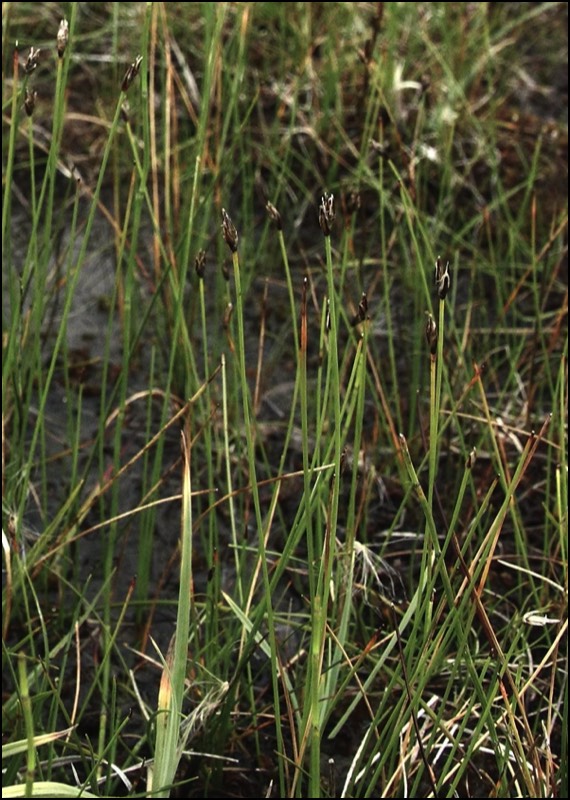
Eleocharis quinqueflora, Glen Fender Meadows SAC, Blair Atholl, July 2010
➢ a slight and slender plant (more slender than the four larger species except some smaller uniglumis);
➢ +/- tufted (uniglumis is patch-forming)
➢ spikelets small, short, and few-flowered;
➢ lowest glume encloses spikelet (like uniglumis), and often half as long as spikelet (uniglumis shorter, rounder, less elongated);
➢ stigma 3-forked (as in multicaulis and the two smaller species; contrast uniglumis and larger species, 2-forked);
➢ ripe nut has style-base not swollen (rules out all larger species; very distinct from uniglumis);
➢ springs, seepages, with some mineral influence, especially upland (uniglumis sometimes in this habitat); rarely emergent from water: contrast with acicularis (silt/sand in +/- still water, often submerged, mainly lowland) and parvula (very local, estuary mud only).
➢ tightly or loosely tufted;
➢ when newly emerged, inconspicuous: short glaucous stems with dark heads;
➢ can look like Carex dioica, which is however an earlier developer, has leaf-blades, and a longer, paler, spikelet (below).
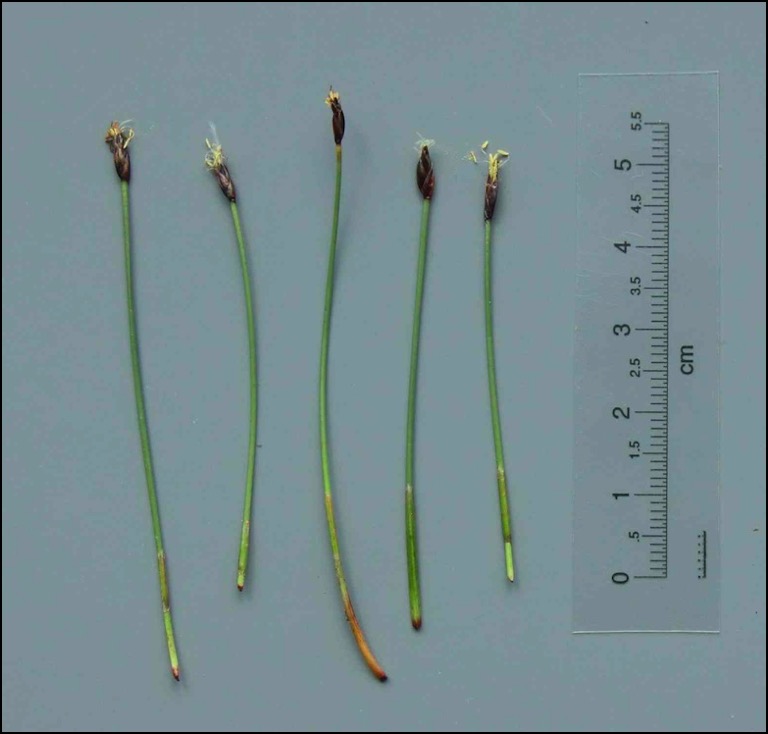
newly emerged E. quinqueflora stems in flower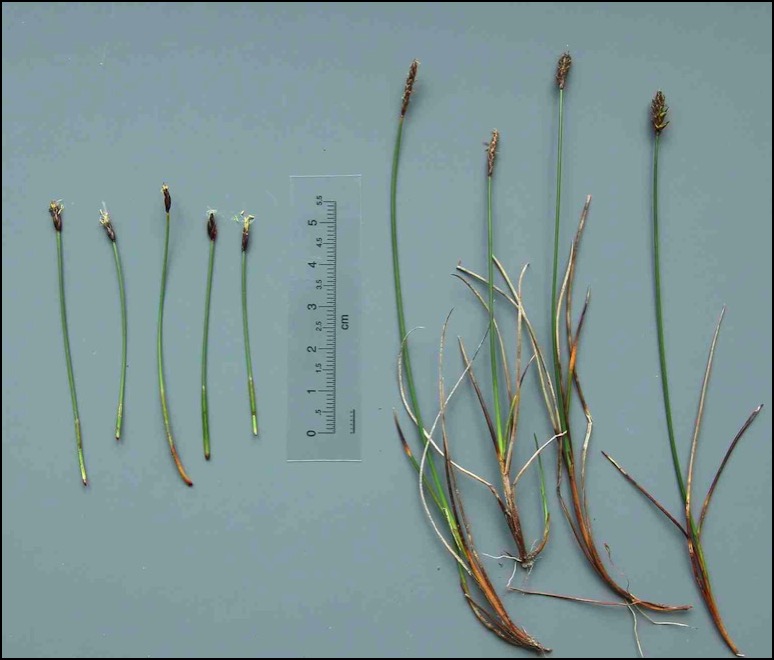
(five stems on left) Eleocharis quinqueflora;
(four stems on right) male and female Carex dioica from the same site, same time
➢ also like stunted forms of deergrasses Trichophorum – even very short and weak T. germanicum! – note deergrasses have the short leaf-blade on the upper leaf-sheath (below).
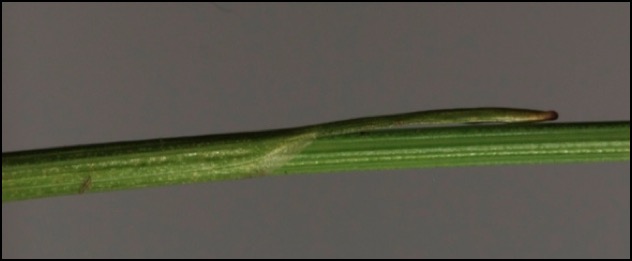
Leaf-blade of upper sheath in Trichophorum species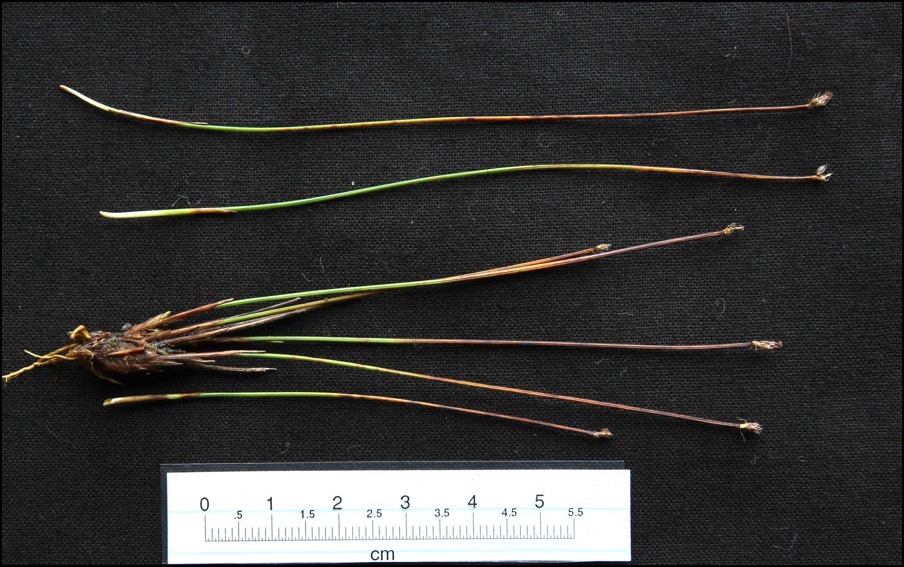
Very stunted Trichophorum germanicum!; note small leaf blades on upper sheaths (compare E. quinqueflora picture below)
➢ up to 20 cm when mature, similar to uniglumis (which has spikelets much longer than basal glume and very different nut/style-base characters).

E. quinqueflora: late-season stems
Spikelets ⇑
➢ short, few-flowered; ovoid or rhomboid;
➢ lowest glume about half as long as the spikelet (but variable), and encloses its base.
Some spikelets may have a lowest glume shorter than half spikelet length, and suggest uniglumis. In immature plants check stigmas (3-forked here; 2-forked in uniglumis), and if mature, check nuts (slender style-base and no 'neck' here; obvious 'neck' below swollen style-base in uniglumis) - see section below. Quinqueflora tufted; uniglumis patch-forming.
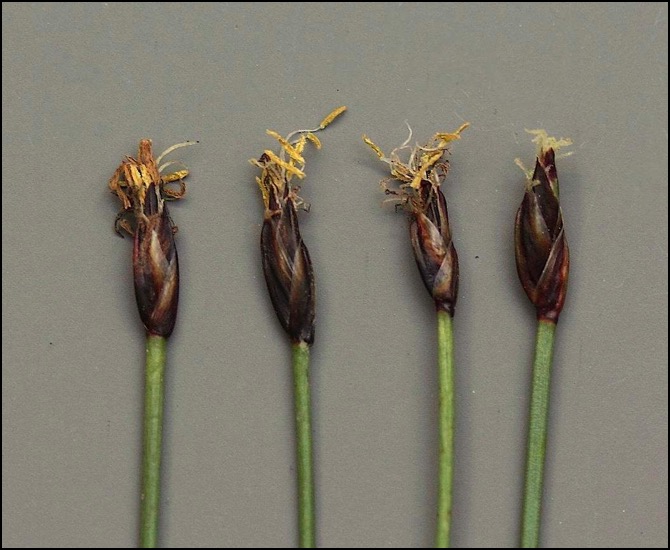
spikelets in flower, showing basal glumes close to half length of spikelets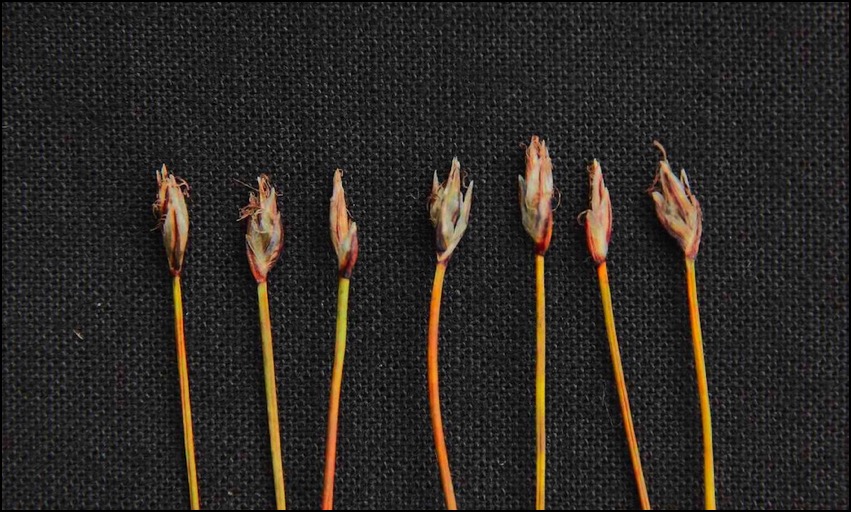
spikelets in fruit
Flowers ⇑
➢ stigma 3-forked
➢ perianth bristles 4-6 (but not significant for identification)
Nuts
➢ style-base (stylopodium) is not swollen
➢ style-base runs down smoothly into nut, with no constriction (‘neck’)

nuts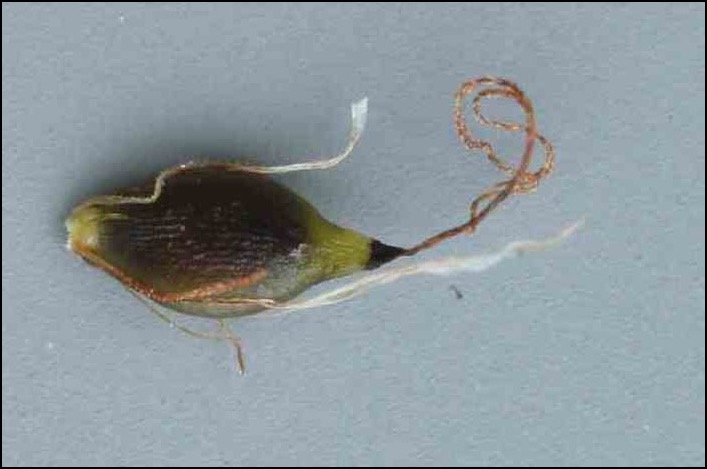
style-base not enlarged, runs smoothly into nut
(yes – I know the stigma appears 2-forked here: I think two of the threads are confluent)
Habitat ⇑
➢ mires, especially open seepages with at least a modicum of base-enrichment
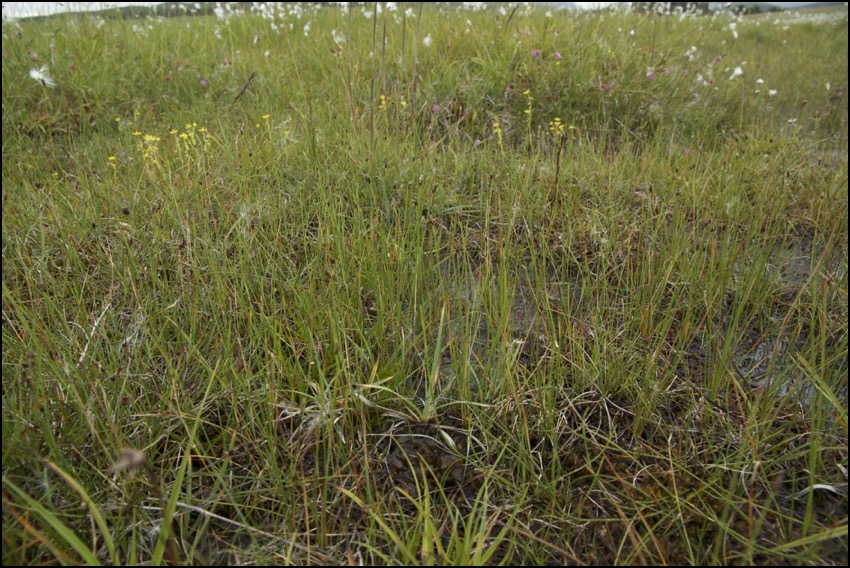
Glen Fender Meadows SAC, Blair Atholl (Highland): quinqueflora with Saxifraga aizoides, Triglochin palustris,
Eriophorum angustifolium and E. latifolium, Carex dioica, etc. (July 2010)
Frequency & range ⇑
➢ very frequent in more hilly areas of north and west. See ⇒distribution map.
Links to the other Eleocharis spike-rush pages (also accessible from the sidebar)
Species pages
Separation of similar pairs
Other information
